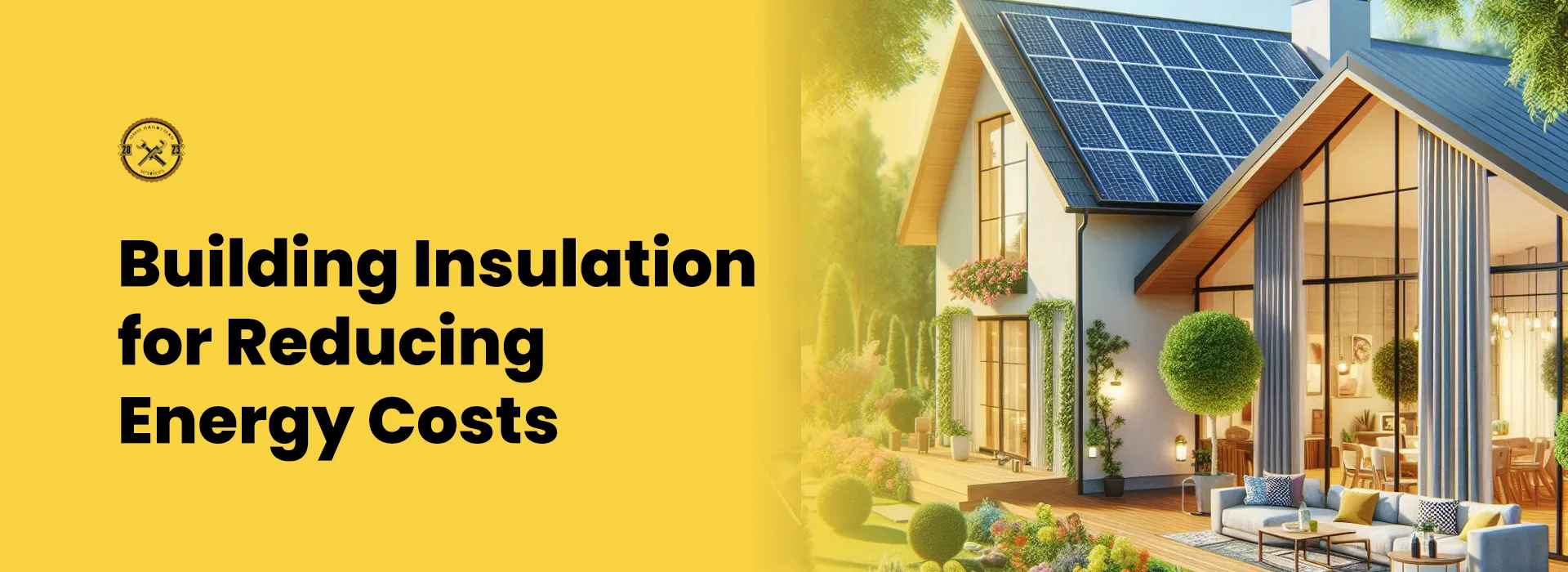
A Guide to Building Insulation for Reducing Energy Costs
As energy costs continue to rise, homeowners and business owners alike are increasingly looking for effective ways to cut down on expenses. One of the most impactful yet often overlooked strategies is improving building insulation. Insulation plays a critical role in maintaining comfortable indoor temperatures, reducing energy consumption, and ultimately lowering energy bills. In this guide, we’ll explore the different types of insulation available, the benefits of each, and practical tips for improving your building’s insulation.
Understanding Insulation
At its core, insulation is a material that slows down the transfer of heat. In winter, it keeps warm air inside, while in summer, it prevents the hot air from seeping in. This balance is crucial for maintaining a comfortable indoor environment. When your building is well-insulated, your heating and cooling systems don’t have to work as hard, leading to significant energy savings.
Types of Insulation
There are several types of insulation materials, each with its advantages. Here are some of the most common options:
Fiberglass Insulation: This is one of the most widely used insulation materials, made from fine strands of glass. It is available in batts, rolls, and loose-fill forms. Fiberglass is relatively inexpensive and effective, but it can be irritating to the skin, so protective gear is essential during installation.
Foam Board Insulation: Made from polystyrene or polyisocyanurate, foam board insulation provides excellent thermal resistance. It’s often used in areas where space is limited, such as basement walls or as exterior sheathing. Foam boards are also water-resistant, making them suitable for below-grade applications.
Spray Foam Insulation: This is a popular choice for hard-to-reach areas. Spray foam expands upon application, filling gaps and cracks that traditional insulation might miss. It provides excellent air sealing and insulation but can be more expensive than other options.
Cellulose Insulation: Made from recycled paper products, cellulose is an eco-friendly option. It’s treated with a fire retardant and is typically blown into wall cavities or attics. Cellulose is effective at reducing air leakage, making it a good choice for older homes.
Mineral Wool (Rock Wool) Insulation: This insulation is made from natural or recycled materials and offers excellent fire resistance. It’s also soundproofing properties, making it ideal for use in multifamily buildings or home theaters.
Benefits of Proper Insulation
Investing in quality insulation has several benefits:
Energy Savings: A well-insulated building can significantly reduce energy consumption. According to the U.S. Department of Energy, homeowners can save up to 20% on heating and cooling costs simply by insulating their homes properly.
Comfort: Insulation helps maintain consistent indoor temperatures. No more drafts in the winter or overheated rooms in the summer! A comfortable living or working environment can also lead to increased productivity and better overall well-being.
Environmental Impact: Reducing energy consumption lowers your carbon footprint. By improving insulation, you contribute to a more sustainable future and decrease your reliance on fossil fuels.
Increased Property Value: Energy-efficient homes tend to have higher resale values. Prospective buyers are increasingly looking for properties with low energy costs, making insulation improvements a smart investment.
Tips for Improving Your Building's Insulation
Conduct an Energy Audit: Start by identifying where your building is losing energy. An energy audit can help you pinpoint areas that need improvement, such as drafty windows, doors, or insufficient insulation in the attic or walls.
Seal Air Leaks: Before adding insulation, address any air leaks. Use caulk or weatherstripping around windows and doors to prevent drafts. This simple step can enhance your insulation’s effectiveness.
Choose the Right Insulation for Your Needs: Consider factors like climate, building type, and budget when selecting insulation materials. Consult with a professional if you’re unsure which option is best for your situation.
Prioritize Attics and Basements: These areas are often the most significant sources of heat loss. Ensure your attic is properly insulated and ventilated, and consider adding insulation to basement walls to prevent heat transfer.
Professional Installation: While some insulation types can be a DIY project, others may require professional installation to ensure effectiveness. Don’t hesitate to hire experts, especially for spray foam or complex systems.
mproving your building’s insulation is one of the most effective ways to reduce energy costs, enhance comfort, and contribute to a more sustainable future. With various insulation options available, there’s a solution for every need and budget. By investing time and resources into insulation improvements, you not only save money but also create a more comfortable living or working environment. So, take that first step today—your wallet (and the planet) will thank you!

